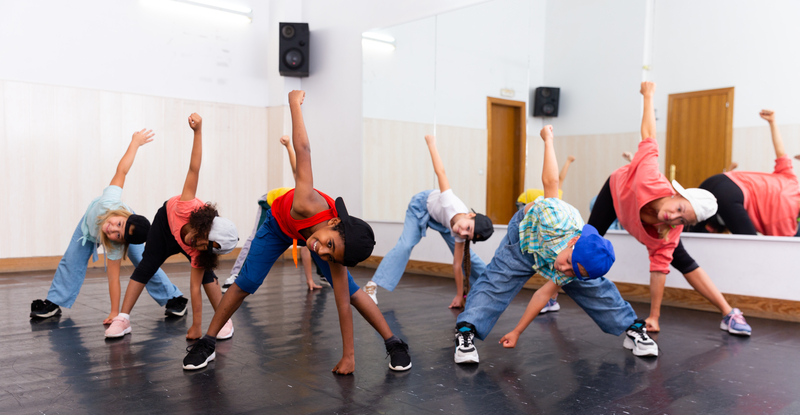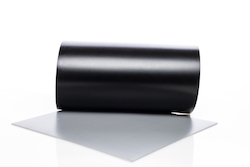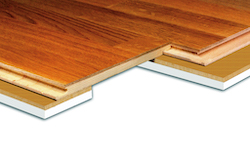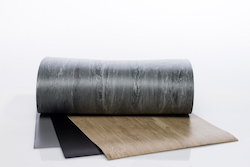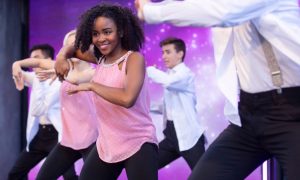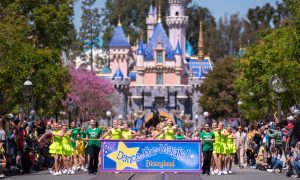Whether you are opening a dance studio for the first time, or have owned one for awhile, you know a proper dance floor is a vital part of your business. The floor is critical for both safety and performance of staff and students. Being able to leap, jump and pirouette across the space gracefully has much to do with skill, as it does doing on the right kind of flooring.
But what flooring option is best for your dance studio?
There are two types of flooring to consider – wood or vinyl – and variations of both. Regardless of the dance styles you teach at your studio, there is going to be an option just right for you.
Marley dance floors
Marley is a specialty vinyl designed specifically for dance. Widely accepted in the dance world, Marley flooring comes in a number of variations, including soft and hard (dense) types. Soft vinyl flooring is more pliable, such as reversible Marley, and is a lightweight and cost-effective option. Dense vinyl is ideal for multipurpose studios because it can withstand heavy percussive tap.
Some Marley floors come with a cushioned backing, eliminating the need for a floating subfloor. Most Marley floors have fiberglass linings that provide stability and better lie flat.
Opting for Marley will give your studio more versatility in selecting the surface ideally suited for the dance styles you teach.
Benefits of Marley flooring:
- Less maintenance
- Easy to install
- Economical
- Many varieties available, including foam-backed, reversible and multipurpose
- Transportable, portable or permanent install options
Hardwood dance floors
Another option for dance studios is hardwood flooring with a SpringFlex floating subfloor. Elegant, warm and multipurpose flooring can be used for many dance styles. Choose between maple, oak or other hardwood varieties. Hardwood floors will last for many years with the proper maintenance.
Encore hardwood flooring systems is an alternative to permanent hardwood floors. They offer easy install with no screws or sanding and can be disassembled and reinstalled in another location.
Benefits of hardwood flooring:
- Aesthetically pleasing
- Long-lasting
- Great for dance styles with hard sole shoes
- Multipurpose studios with proper floor finish
- Available in portable or permanent configurations
The materials you shouldn’t use
There are a number of materials that are not recommended for dance studios: laminate, most engineered wood and bamboo. They can end up being exceedingly slippery, making it far too dangerous for a dance studio with no option for making them more user-friendly. They tend to have a surface that is easily scratched and difficult to repair.
Matching dance floors and dance styles
Different dance flooring options are better suited to specific styles of dance. A ballet studio needs a more slip-resistant surface than one that accommodates tap and hip hop. Similarly, if you have multiple forms of dance being taught, it’s important to select a flooring types that suits every style.
#1. Ballet and pointe
Studios need a sprung or floating subfloor and a slip-resistant surface that is appropriate for the dance styles being taught.
There are many Marley styles available, including Quietstep for cushioning jumps, reversible Bravo, and Dancestep Plus flooring with fiberglass for added stability and dual density foam backing for direct installation over concrete.
#2. Modern and contemporary
What do modern, contemporary and lyrical styles have in common? The use of bare feet or soft-sole shoes or socks. Reversible Marley is an ideal floor for modern and contemporary classes since the surface is slip-resistant and soft to the touch.
#3. Tap and jazz
Tap needs a floor that can amplify sounds and take the wear and tear of metal. Since the sound is paramount, it makes sense that dancers would want a floor that resonates whenever they shuffle or paradiddle. Tap and jazz require gliding or sliding, which means they need a floor with less slip resistance then ballet floors.
An excellent option is maple or oak hardwood floors. Stay away from soft wood like pine, since it won’t withstand the impact of the metal taps.
Looking for a portable hardwood option for your studio? Consider Encore hardwood flooring. Timestep, a solid Marley floor, is a perfect option that can be installed permanently or semi-permanently, handles sounds very well, and provides a tough wear surface. Sound is primarily amplified by the subfloor, so make sure your floating subfloor will do the job. Rubber, carpet underlayment, or foam tiles will absorb sounds and provide little energy absorbency.
#4. Hip hop and street dance
Hip hop is high-powered and energetic. Dancers also wear street shoes when dancing, meaning that softer forms of vinyl are less desirable. Hardwood flooring is an option, but dense Marley such as Timestep will also work.
#5. Ballroom
Since high heels are involved, ballroom dancing is best done on a hardwood floor. Look to Encore for the top-of-the-line ballroom environment.
Find your dance floors at Stagestep
Are you going to go with a multipurpose floor? Or do you need something for a single style of dance? From soft non-slip Marley for ballet and modern, to hardwood or heavy-duty Timestep for tap, jazz and street dance, there are dance floor options for every kind of dance.
For more than 50 years, Stagestep has been supplying the dance industry with high-quality dance floors, subfloor systems, maintenance and installation products. Fill out the contact form to learn more about Stagestep’s flooring options.
By Randy Swartz of Stagestep.


